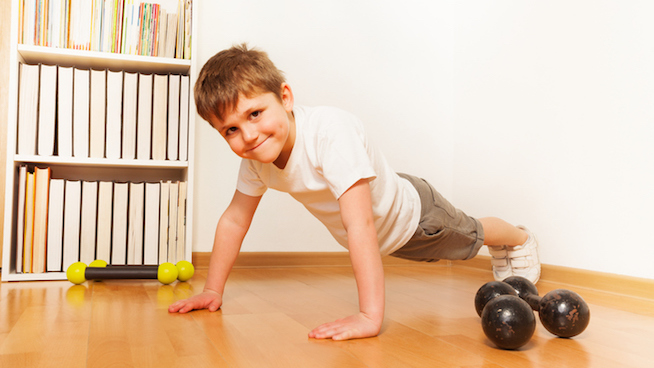
Sports Training for Kids: “Aren’t They Too Young”?
“Is my child too young to start working out”? This is a question that parents often ask. Many people see the opportunity for their child to improve athletically with strength training, but wonder if they will be doing more harm than good. This is a legitimate concern because the last thing that any parent wants is to cause harm to their child, especially if the intention was good. The research tells us a different story though, one that says that we’re actually helping prevent future injury by getting kids involved in structured exercise at an early age. Here are a few reasons why.
-
They learn proper body mechanics and set the stage for future strength gains.
Children’s bodies are in a constant state of change, and because of that change they’re always re-learning how to control their body. One of the greatest benefits of training for young athletes is that it gives coaches an opportunity to teach the athlete to better understand what their body is doing and how it is moving in space. Although they won’t put on muscle mass before puberty, they do learn technique and improve their strength as their body makes more efficient connections from the brain to the muscles. This combination of trained body awareness paired with better neuromuscular connections ensures that their body is functioning optimally as the grow. It also prepares them to safely make even greater strength gains when they hit puberty and have the hormones required to improve muscles size and further build strength.
-
They improve their ability to absorb impact with their lower body.
Have you ever noticed that when young athletes play basketball you can hear their feet stomping the court as they come to a stop? When children sprint, they have to absorb the equivalent of 2-3x their body weight every time their foot hits the ground. When they jump this number explodes to as high as 12x body weight depending on how high they jump. These forces can have a detrimental effect on a child’s skeletal structure over time. The noise you hear when they’re trying to stop on the basketball court is poorly controlled deceleration. Improving the ability to decelerate properly and strengthening the muscles responsible for deceleration allows the muscles, rather than the joints, to absorb the ground reactive forces when they sprint, jump, cut, or stop. This will help to protect their bones and joints as they continue to grow.
-
They prevent the damage that spending even more time on their sport would cause.
Many of the injuries seen in youth sports can be attributed to overuse from performing the same actions repetitively. This has only become worse in recent years with the year-round sports culture that has been created by AAU and similar leagues. There is a strong cultural pressure felt among these young athletes and their parents to continue to play and practice “their sport” year-round to avoid falling behind the competition. This is wrong on so many levels, but one of the worst offenses is that it forces them to repeat the same movements year-round, leading to overuse and injury to susceptible joints. Replacing some of this time with structured exercise gives the athletes joints a break from the repetitive motions that they’re generally subjected to allows them to put some emphasis on training the muscles that will help to protect them as they grow and continue to play.
These are just some of the benefits of sports training for young athletes, particularly as they relate to injury prevention. The mental and performance benefits would make up enough content for a few more posts (and maybe they will someday). But the main concept that I want you to take away from this article is that you are not increasing your child’s risk for injury by getting them into a sports training program, it’s in fact quite the opposite; you’re protecting them. If you don’t want to take my word for it, check out the video below and see what Joe has to say about it.
Steve Zarriello is a Certified Strength and Conditoning Specialist, and the owner of Olympia Fitness and Performance, located in Cranston, RI. He has been training clients of all different ages, abilities and backgrounds to help them reach their specific goals for almost 15 years. His primary focus is on working with golfers to help improve their ability to play the game and keep them pain free.
Ground reaction forces at different speeds of human walking and running. J Nilsson, A Thorstensson. Acta Physiol Scand. 1989 Jun;136(2):217-27. https://pubmed.ncbi.nlm.nih.gov/2782094/
Analysis of the Vertical Ground Reaction Forces and Temporal Factors in the Landing Phase of a Countermovement Jump. Daniel Rojano Ortega, Elisabeth C. Rodriguez Bies, Francisco J. Berral de la Rosa. Journal of Sports Science and Medicine (2010) 09, 282-287. https://www.jssm.org/jssm-09-282.xml%3EFulltext

